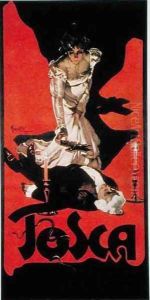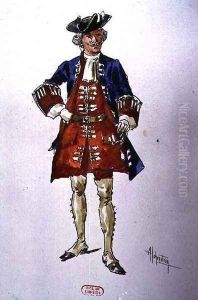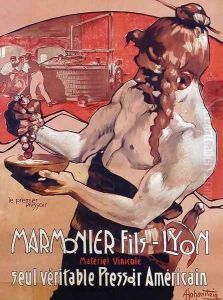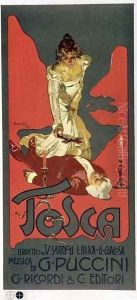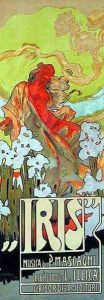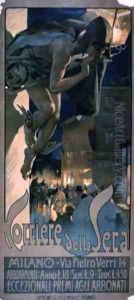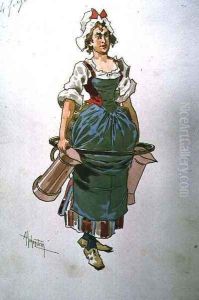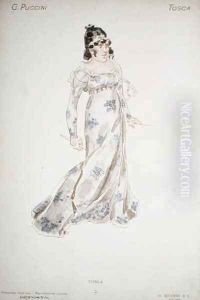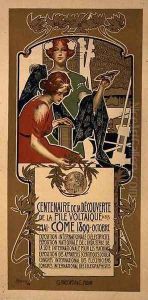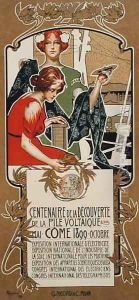Adolf Hohenstein Paintings
Adolf Hohenstein, born in Saint Petersburg, Russia on March 18, 1854, was a prominent figure in the art world, known for his multifaceted contributions as a painter, illustrator, costume designer, and set designer. He is often regarded as the father of the Italian poster art movement, having played an instrumental role in its development during the late 19th and early 20th centuries.
Hohenstein moved to Italy at a young age, where he would eventually become a central figure in the burgeoning scene of commercial and theatrical art. He studied at the Academy of Fine Arts in Vienna and later at the Academy of Fine Arts in Munich. His talent was recognized early, and he began working as an illustrator for various publications, which honed his skills and brought his work to a wider audience.
In the 1880s, Hohenstein's career took a significant turn when he was hired by the renowned Italian publisher Ricordi to produce posters, stage sets, and costumes. This opportunity allowed him to work closely with the Italian opera, which was at the height of its popularity. Hohenstein's designs for posters and stage productions were characterized by their vibrant colors, dynamic compositions, and an innovative use of typography, which set new standards in the field of graphic design.
His work for Ricordi made him a central figure in the Stile Liberty, the Italian variant of the Art Nouveau movement, which swept through Europe at the turn of the century. Hohenstein's posters, particularly those advertising operas by Giuseppe Verdi and Giacomo Puccini, are some of the most iconic images of the period, capturing the essence of the Art Nouveau style with their flowing lines and organic forms.
Throughout his career, Hohenstein continued to work in various capacities in the theater world, designing sets and costumes for many productions. His work influenced a generation of artists and designers who would continue to shape Italian visual culture for years to come.
Adolf Hohenstein's impact on the arts was significant, and his legacy is seen in the continuing appreciation for his work in the fields of poster art, theater design, and illustration. He passed away on April 12, 1928, in Bonn, Germany, leaving behind a rich body of work that continues to be celebrated for its beauty and innovation.
